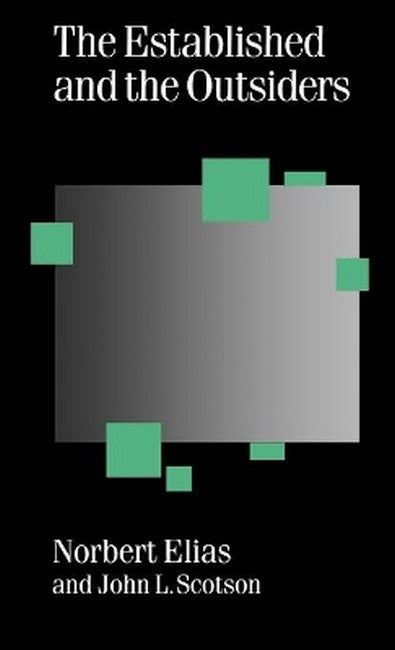Introduction - Norbert Elias A Theoretical Essay on the Established and the Outsiders Preface Considerations of Procedure Neighbourhood Relations in the Making Overall Picture of Zone 1 and Zone 2 The Mother-Centred Families of Zone 2 Local Associations and the 'Old Families' Network' Overall Picture of Zone 3 Observations on Gossip Young People in Winston Parva Conclusion
Request Academic Copy
Please copy the ISBN for submitting review copy form
Description
The Established and the Outsiders, is a reissue of a study carried out in the 1950s, while Elias was employed in the department of sociology at the University of Leicester. It is safe to say that it has been rescued from obscurity as part of the collective effort to publish as much of Elias's oeuvre as possible.... [The book] is worth reading today primarily for the light it sheds on Elias's intellectual development. Those interested in this aspect can read the introductory chapter, which was written by Elias ten years after the original date of publication for the Dutch edition. Here, Elias uncovers what he considers a universal human theme in the small community of Winston Parva on the outskirts of Leicester.... This particular case study is itself interesting in that these established and outsiders are formed out of the same social class, the working class of the British Midlands, on the basis of neighbourhood and life-style, not relation to the means of production or ethnic or racial differences. As in all his work, Elias uncovers here structural regularities which underlie historical variations in human behaviour.... Norbert Elias and his ardent followers have done sociology a great service in publishing [the book] which help[s] keep alive his interest in the long-term processes of social change. The "civilizing process" will remain a powerful research program for an historical sociology... capable of generating interesting case studies like The Established and the Outsiders. -- Acta Sociologica The Established and the Outsiders was first published in 1965. It grew out of a study of a community near Leicester in the late 1950s and early 1960s by John Scotson, a local schoolteacher interested in juvenile delinquency. But in the hands of Norbert Elias, one of the century's great sociologists, this local study was reworked to illuminate social processes of general significance in human society generally - including how a group of people can monopolise power chances and use them to exclude and stigmatise members of another very similar group (for example through the poweful medium of gossip), and how that is experienced in the collective `we-images' of both groups. Ten years later Elias dictated, in English, a long new introduction for the Dutch translation of the book. This 'Theoretcial Essay on Established and Outsiders' spelled out how the theory could be applied to a whole range of changing patterns of human inequality: to relations between classes, ethnic groups, colonised and colonisers, men and women, parents and children, gays and straights. For many years it was thought that parts of the English text of this important essay had been lost, but they came to light in 1994 after Elias's death in 1990, and the essay is now published in English for the first time in this volume. -- Stephen Mennell

